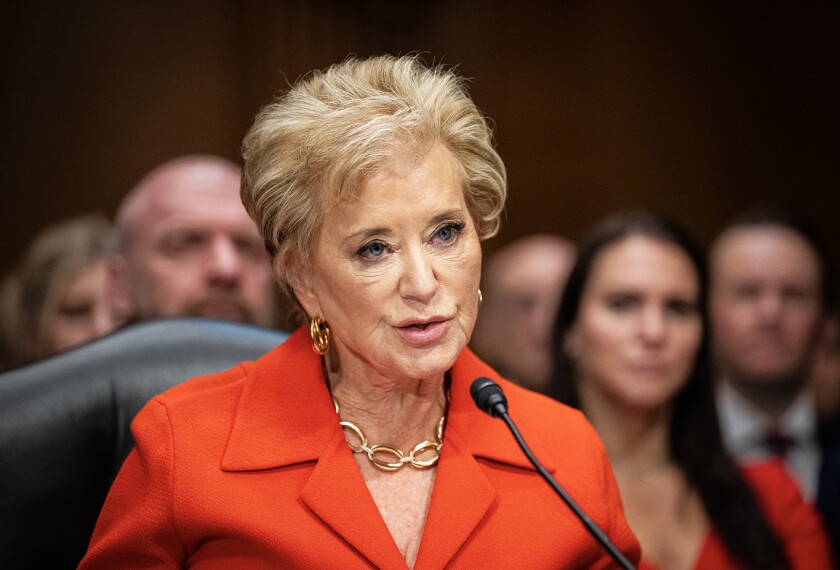The federal government often falls short of solving our most challenging problems because our most challenging problems are more complex and nuanced than a one-size-fits-all approach can offer. 
State policymakers grapple with ideas that start in Washington and trickle down to the local level with layers of bureaucratic strings attached. 
It drove me crazy when I was governor of Florida. 
The Trump administration has a chance to shift the power dynamic back to the states, where policymakers are uniquely equipped to understand and address the diverse needs of their students, schools, and communities.  
As we enter this new chapter, it is crucial that the federal government step back and allow states to drive education innovation and empower families. The role of the federal government should be clear and limited. 
State leaders are closest to their communities and best positioned to identify and address their education challenges. From closing achievement gaps in underserved communities as in early literacy to fostering cutting-edge workforce readiness by redesigning the high school experience as in Indiana, states are already setting the standard for what’s possible in education. 
Rather than micromanaging or imposing one-size-fits-all mandates, the federal government should support states by block-granting federal education funds and allowing states maximum flexibility to align resources with state and local priorities. 
Leaders in Washington also should consolidate and simplify programs under the Elementary and Secondary Education Act, removing the maze of federal requirements that often hinder states from deploying funds effectively. 
In exchange for this flexibility and authority, states should be held accountable for administering an annual assessment of student achievement and a school accountability system and participating in the National Assessment of Educational Progress, commonly known as the Nation’s Report Card. This is, more or less, what’s currently required of states.
Regardless of party, federal officials always seem to be spending more of taxpayers’ money. Instead of further expanding federal grant programs that mandate state and local spending, it would be refreshing to see new funds used to reward states that actually achieve rising student performance, particularly for students who are most at risk. This could look like only providing new funding to states that objectively move the needle on student reading and math achievement with extra financial incentives for improving outcomes for our most at-risk students, including those who are low-income or have special needs.
Regardless of party, federal officials always seem to be spending more of taxpayers’ money.
The federal government could use annual state-reported outcomes data to determine a state’s share of these financial rewards. And to keep states honest and not inadvertently drive them toward lowering expectations, as some have been doing, NAEP proficiency data should be used as truth serum applied to state outcomes data.
States where grade-level performance is aligned with NAEP proficiency would be encouraged to keep those high expectations. States where grade-level performance is below that of NAEP proficiency would be incentivized to raise their state expectations, receiving less funding depending on the difference between their standards and NAEP standards. This so-called “honesty gap” makes it harder for families and educators to know how students are actually doing.
Providing incentive funding should also speed up reporting results because the sooner the results are released, the sooner the state can receive the funding.
Finally, every parent deserves the freedom to choose the education path that best meets their child’s needs. Across the country, states have pioneered programs that provide families with real options—whether through education savings accounts, scholarships, or tax credits for private school tuition. These approaches give families options beyond public charter schools by making private schools and tutoring accessible to more families. Such state-led efforts are transforming lives and delivering on the promise of education opportunity for every student.
The federal government should follow the states’ lead by creating a federal tax credit for education scholarships, opening more school choices to families in their state and removing federal regulations that might hinder states and families from implementing innovative school choice programs. 
Washington should not dictate how these programs are structured. States are proving that when families are empowered to choose, students thrive. have looked at the potential benefits of school choice to families and to communities at large—for example, parents’ satisfaction with a program and whether taxpayer money was saved. As analyzed by EdChoice, a research and advocacy group supporting school choice, almost 90 percent of those studies showed positive effects.
The challenges facing America’s education system are vast, but the solutions are already taking shape in states across the nation.
The federal government must recognize that it is not the driver of education policy but a partner in creating the conditions for success. By respecting state leadership, removing obstacles, and supporting the choices families and local communities make, we can ensure that every child in America has access to a world-class education. 
This is a defining moment for education in our country. States are ready to lead, families are eager for change, and the path forward is clear. Together, let’s build a brighter future—one that honors the voices of parents, trusts the leadership of states, and transforms the lives of students. 






